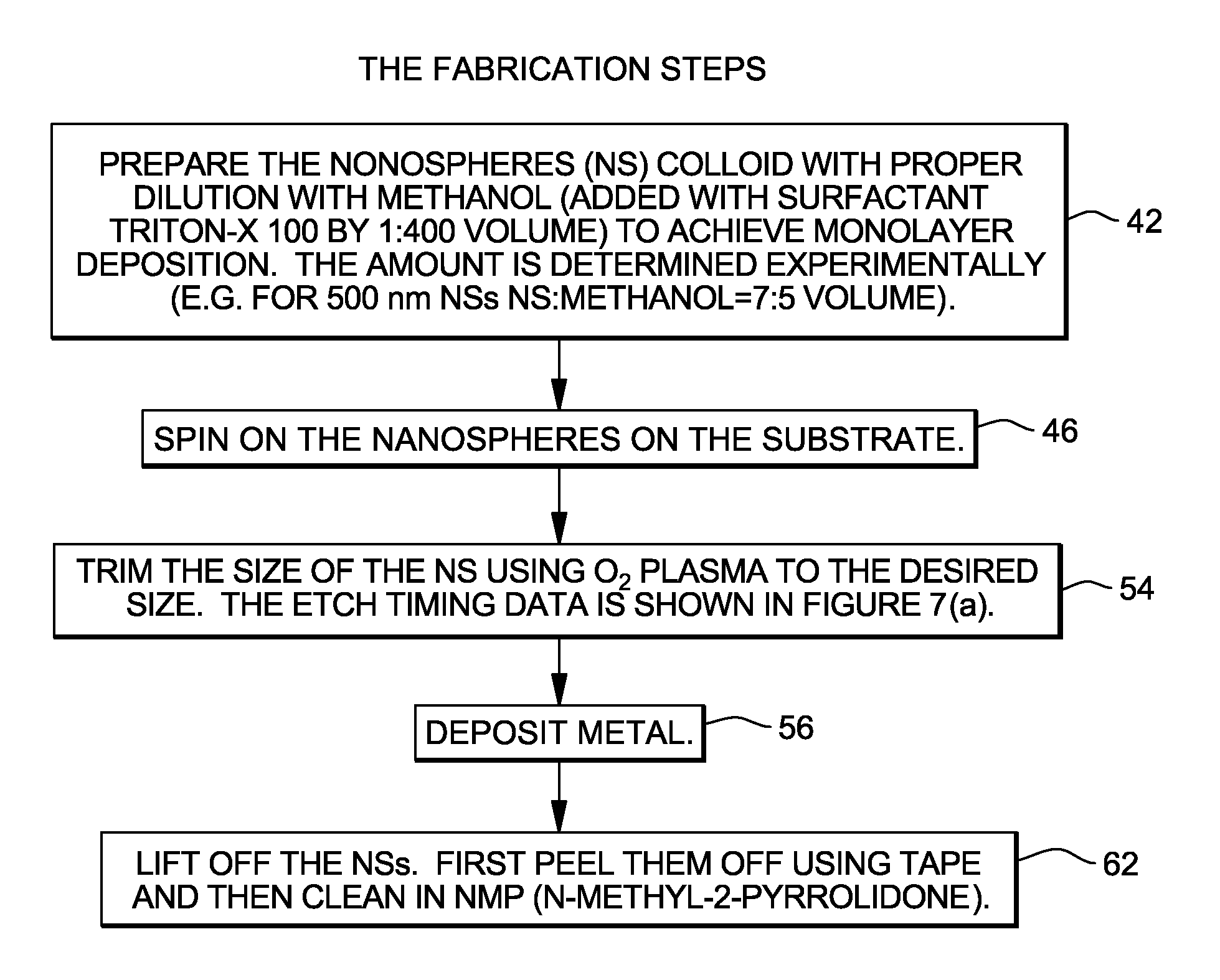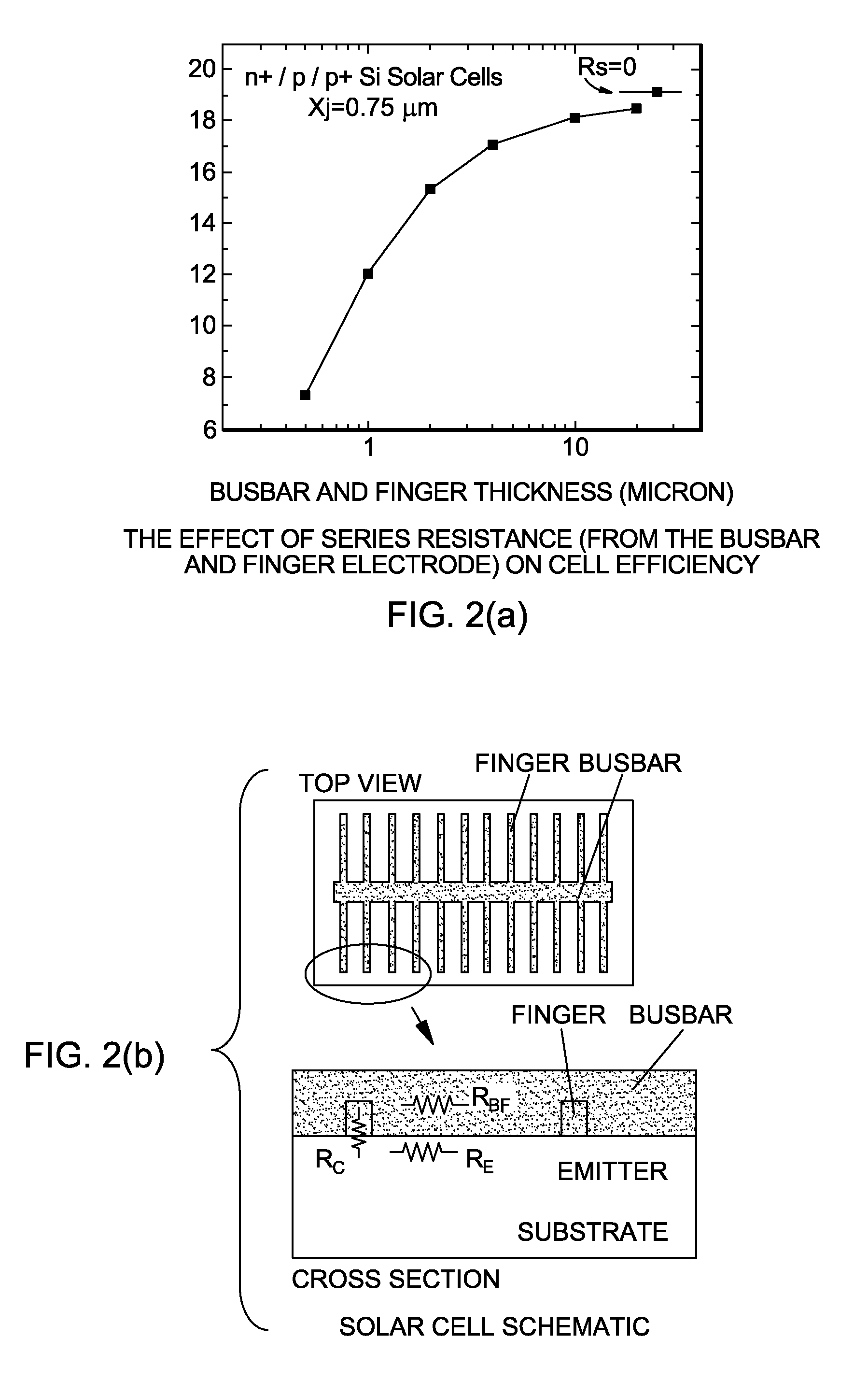Holey electrode grids for photovoltaic cells with subwavelength and superwavelength feature sizes
a photovoltaic cell and feature size technology, applied in the field of solar or light energy, can solve the problems of limiting cell performance, limiting photovoltaic energy collection, and limiting the series resistance issu
- Summary
- Abstract
- Description
- Claims
- Application Information
AI Technical Summary
Benefits of technology
Problems solved by technology
Method used
Image
Examples
Embodiment Construction
[0025]FIG. 1 is a diagram of a photovoltaic (PV) device, or solar cell, 10. The PV device 10 includes a back electrode layer 12, a PV material 14 and a front electrode 16. Light energy is transmitted to the PV layer 14, where it is absorbed and transformed into electric energy. The electricity generated within the PV device 10 migrates to either the front electrode 16 or the back electrode 12, from where it is directed out of the cell through an electrical contact 20 or 22. The PV layer 14 may be constructed of any among many different types of materials, including, but not limited to, semiconductor junctions, organic-dye based materials, photoelectrochemical cells, polymer solar cells, nanocrystal solar cells or dye sensitized solar cells, as well as other PV cell technologies.
[0026]More specifically, in the device of FIG. 1, the PV material 14 may be a semiconductor substrate comprised of a polycrystalline silicon but can also be a single-crystalline silicon, and it is of a p-type...
PUM
 Login to View More
Login to View More Abstract
Description
Claims
Application Information
 Login to View More
Login to View More - R&D
- Intellectual Property
- Life Sciences
- Materials
- Tech Scout
- Unparalleled Data Quality
- Higher Quality Content
- 60% Fewer Hallucinations
Browse by: Latest US Patents, China's latest patents, Technical Efficacy Thesaurus, Application Domain, Technology Topic, Popular Technical Reports.
© 2025 PatSnap. All rights reserved.Legal|Privacy policy|Modern Slavery Act Transparency Statement|Sitemap|About US| Contact US: help@patsnap.com



